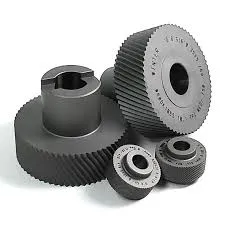
-
 Afrikaans
Afrikaans -
 Albanian
Albanian -
 Amharic
Amharic -
 Arabic
Arabic -
 Armenian
Armenian -
 Azerbaijani
Azerbaijani -
 Basque
Basque -
 Belarusian
Belarusian -
 Bengali
Bengali -
 Bosnian
Bosnian -
 Bulgarian
Bulgarian -
 Catalan
Catalan -
 Cebuano
Cebuano -
 Corsican
Corsican -
 Croatian
Croatian -
 Czech
Czech -
 Danish
Danish -
 Dutch
Dutch -
 English
English -
 Esperanto
Esperanto -
 Estonian
Estonian -
 Finnish
Finnish -
 French
French -
 Frisian
Frisian -
 Galician
Galician -
 Georgian
Georgian -
 German
German -
 Greek
Greek -
 Gujarati
Gujarati -
 Haitian Creole
Haitian Creole -
 hausa
hausa -
 hawaiian
hawaiian -
 Hebrew
Hebrew -
 Hindi
Hindi -
 Miao
Miao -
 Hungarian
Hungarian -
 Icelandic
Icelandic -
 igbo
igbo -
 Indonesian
Indonesian -
 irish
irish -
 Italian
Italian -
 Japanese
Japanese -
 Javanese
Javanese -
 Kannada
Kannada -
 kazakh
kazakh -
 Khmer
Khmer -
 Rwandese
Rwandese -
 Korean
Korean -
 Kurdish
Kurdish -
 Kyrgyz
Kyrgyz -
 Lao
Lao -
 Latin
Latin -
 Latvian
Latvian -
 Lithuanian
Lithuanian -
 Luxembourgish
Luxembourgish -
 Macedonian
Macedonian -
 Malgashi
Malgashi -
 Malay
Malay -
 Malayalam
Malayalam -
 Maltese
Maltese -
 Maori
Maori -
 Marathi
Marathi -
 Mongolian
Mongolian -
 Myanmar
Myanmar -
 Nepali
Nepali -
 Norwegian
Norwegian -
 Norwegian
Norwegian -
 Occitan
Occitan -
 Pashto
Pashto -
 Persian
Persian -
 Polish
Polish -
 Portuguese
Portuguese -
 Punjabi
Punjabi -
 Romanian
Romanian -
 Russian
Russian -
 Samoan
Samoan -
 Scottish Gaelic
Scottish Gaelic -
 Serbian
Serbian -
 Sesotho
Sesotho -
 Shona
Shona -
 Sindhi
Sindhi -
 Sinhala
Sinhala -
 Slovak
Slovak -
 Slovenian
Slovenian -
 Somali
Somali -
 Spanish
Spanish -
 Sundanese
Sundanese -
 Swahili
Swahili -
 Swedish
Swedish -
 Tagalog
Tagalog -
 Tajik
Tajik -
 Tamil
Tamil -
 Tatar
Tatar -
 Telugu
Telugu -
 Thai
Thai -
 Turkish
Turkish -
 Turkmen
Turkmen -
 Ukrainian
Ukrainian -
 Urdu
Urdu -
 Uighur
Uighur -
 Uzbek
Uzbek -
 Vietnamese
Vietnamese -
 Welsh
Welsh -
 Bantu
Bantu -
 Yiddish
Yiddish -
 Yoruba
Yoruba -
 Zulu
Zulu
Exploring the Latest Innovations in Thread Rolling Machines for Enhanced Manufacturing Efficiency
Understanding Thread Rolling Machines A Key Component in Precision Manufacturing
In the realm of precision manufacturing, thread rolling machines play a pivotal role in the production of high-quality threaded components. These machines utilize a cold forming process that enhances the mechanical properties of metal parts while minimizing waste. Understanding the operation, benefits, and applications of thread rolling machines is essential for manufacturers looking to optimize their production processes.
What is a Thread Rolling Machine?
Thread rolling machines are specialized equipment designed to create threads on cylindrical workpieces through a deformation process. Utilizing high pressure, these machines press the metal between two or more rotating dies, forming threads without removing any material. This contrasts with traditional cutting methods, where metal is removed to form threads, resulting in higher material wastage.
There are primarily two types of thread rolling processes external and internal. External thread rolling machines shape threads on the exterior of cylindrical components, such as bolts and screws, while internal thread rolling machines form threads within holes or cylinders, ideal for producing nuts and other similar items.
Benefits of Using Thread Rolling Machines
1. Enhanced Mechanical Properties The thread rolling process significantly improves the strength and fatigue resistance of the finished product. Because the metal fibers are reoriented and compressed, the final threaded shape is often stronger than those produced by cutting methods.
2. Material Efficiency Thread rolling is a net-shape process, meaning it maintains a higher yield of material. With little to no waste produced, manufacturers can save costs on raw materials, making it an economically viable option.
3. High Production Rates Thread rolling machines can produce large quantities of threaded parts in a short amount of time. Their ability to work with various materials, including steel, aluminum, and brass, makes them versatile for different manufacturing needs.
thread rolling machines

4. Improved Surface Finish The cold forming process not only shapes the threads but also enhances the surface finish of the product. This reduces the need for additional machining processes, further streamlining production.
5. Consistent Quality The automated nature of thread rolling machines ensures a high level of consistency in the threads produced. This repeatability is crucial in industries where precision is key, such as aerospace, automotive, and electronics.
Applications of Thread Rolling Machines
Thread rolling machines are employed across various industries due to their efficiency and quality output. In the automotive sector, they are essential for manufacturing components such as bolts, nuts, and other fasteners that require precise threading. The aerospace industry, known for its stringent safety standards, relies on these machines to produce critical components that must withstand extreme conditions.
Moreover, thread rolling technology is becoming increasingly popular in the medical device industry, where precision and reliability are paramount. Devices like surgical screws and implants often require specific thread designs to ensure proper functionality and safety.
In addition to these applications, thread rolling machines also find usage in the production of electronic components, where fine threaded parts are crucial for connectivity and functionality.
Conclusion
Thread rolling machines represent a vital technology in the field of precision manufacturing. Their ability to produce strong, efficient, and high-quality threaded components makes them indispensable in numerous industries. As technology continues to advance, the role of thread rolling machines will likely expand, offering even more innovative solutions for manufacturers striving for excellence in their products. Understanding their benefits and applications not only helps manufacturers optimize their production processes but also reinforces the importance of integrating advanced technologies into modern manufacturing practices.
